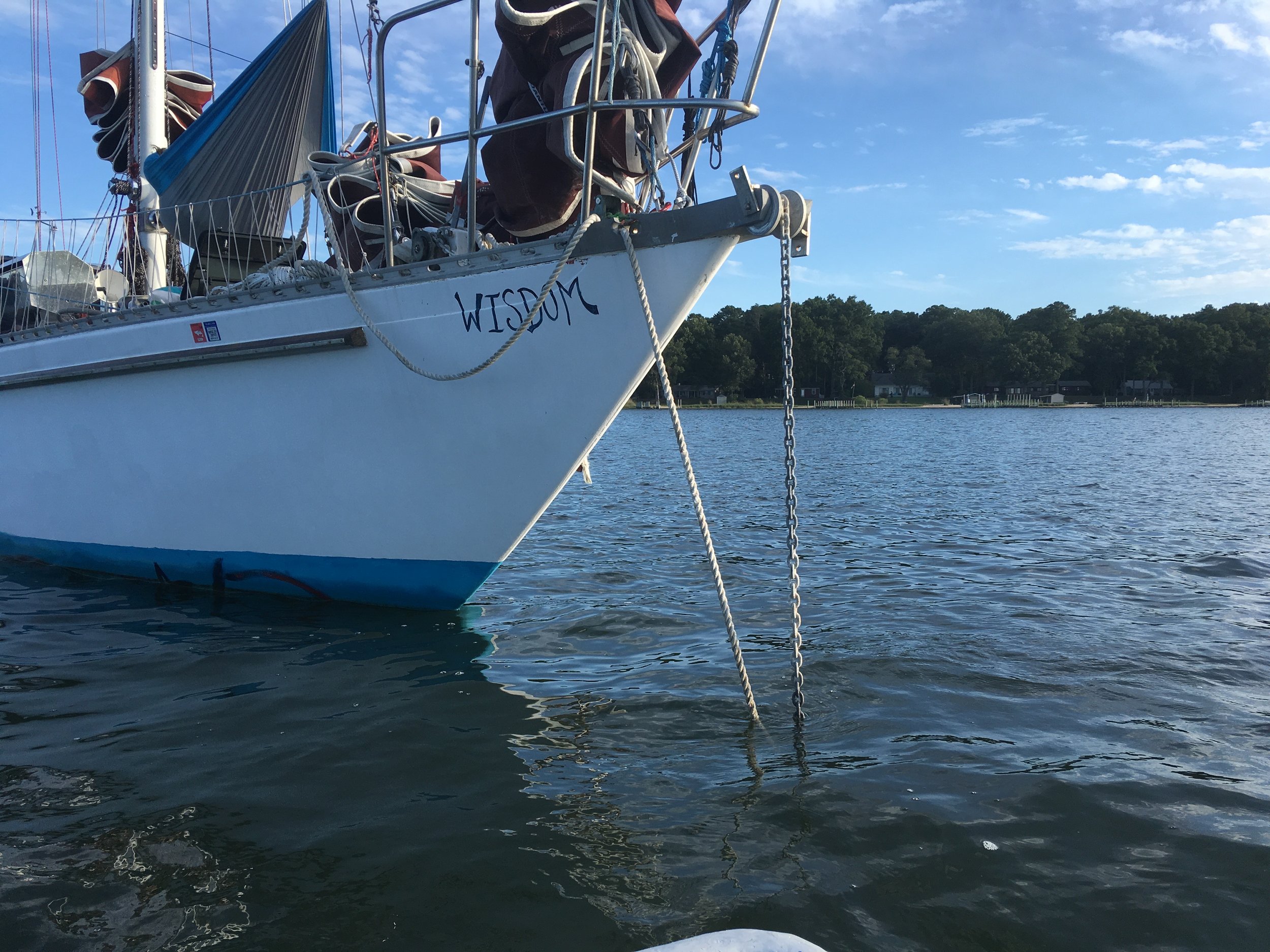While cruising, one of the biggest decisions you will need to make is "when to leave." While this may sound like a silly thing to ponder, it really goes much deeper than you would first fathom.
The first step in deciding when to leave is considering your comfort. If you are anchored in the middle of nowhere, and have no protection or access to any stores for supplies and provisions, then it is easy to leave and head towards new waters. The problem is when you find yourself in the perfect place.
You have easy access to shore, the holding is wonderful, and there is great protection from wind and waves. Now you are very comfortable, and leaving such a plush spot can seem rather hard to do. It gets even harder when you throw in cheap restaurants that are within walking distance and wonderful wifi! Now the thought of leaving seems rather insane!
We have come across this dilemma while in Deltaville, VA. There is no crime here, and we have everything we could need or want right where we are! It is now late October, and the winter gales are starting to occur every 8 days. We know that when we leave here, we will have a 40 mile journey to the mouth of the bay in relatively cold and powerful winds.
When we leave, we will have to brave strong winds, tall seas, and no more amenities at our fingertips! The choice is really hard, so we have been waiting for the perfect weather window to feel out when we should leave.
It gets further confounded when you throw in the fact that when we leave here, we will be heading to Bermuda, and that means crossing the Gulf Stream! Now, our perfect weather window needs to be warm, blowing in the right direction, and timed perfectly with the tides to get us out of the bay. Then the winds need to be blowing correctly for the Gulf Stream. As fall descends and winter approaches, this list seems more like a wish list and less like a check list for a weather window.
So what could make us leave our comfortable spot? The dream of clear waters and sandy beaches! While we are here in the marina, we can only dream of far away places; but we can never reach them if we don't untie the lines!
Sometimes, we have to go because our heart tells us to, not because the conditions are right! We are planning on leaving very soon and simply dealing with the weather as it comes at us. We have our list of wants when we set sail, and then we have the actual forecast. Picking the compromise that gets us where we want to go and how we want to get there is the secret to it all.
We could leave tomorrow, where the winds will be blowing 18 knots in the right direction, sending us on a 40 mile run that will probably take about 8 hours to complete, but it will be in the low 50F's. The alternative is to wait until the next day, when the winds will be blowing 4-8 knots, but at a much warmer 60F's. Leaving when it is windy will get us where we need to go, but the rigging will be slack from the cold and the seas will be trying. Then we will appear in the ocean for our first night with a significant swell. The alternative of leaving the following day might mean that we sail through the night to make it to the ocean, but we will be warmer and receive a much calmer welcome to the Atlantic Ocean.
You might be wondering about the Gulf Stream, will the winds be good for crossing it any time soon? The answer is no!
The winds are supposed to blow the wrong way for nearly a week! So we plan on getting out there and analyzing the situation for ourselves. If we feel that the stream looks tame, we will try to brave it, if not, we will continue to head south riding the counter current just west of the west wall of the Gulf Stream.
This approach to cruising might sound crazy, but we see it as getting ourselves to a better waiting spot to head to Bermuda. This year has been a very strange year for weather, and the storms that have developed don't seem to follow the normal rules. With this in mind, we fear that we might get stuck in the Chesapeake for winter if we don't just get out of here.
Heading south along the East Coast of the United States gives us the freedom to simply pull into another port if we need to restock our provisions, or head to Bermuda if the weather presents itself. Worst case scenario, if we head south long enough while trying to escape the horrible winter storms that are plagueing our area, we will end up in a much warmer place, such as Florida or the Bahamas.
Looking at the situation this way, it seems foolish not to leave now! The sooner we go, the sooner we can get someplace new to explore and seas to sail!









